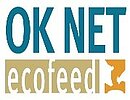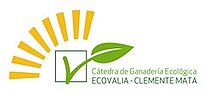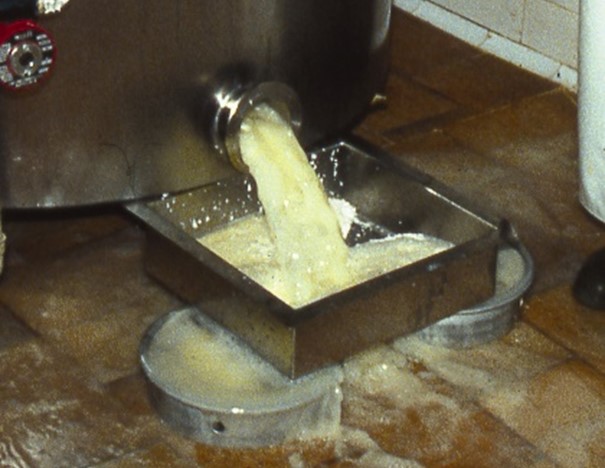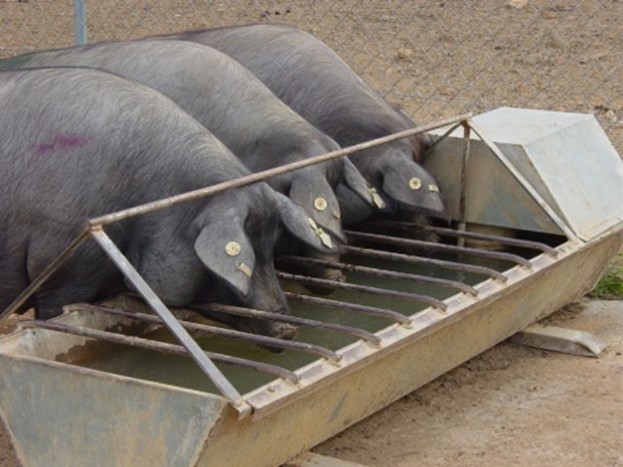Whey for fattening organic pigs
Problem
According to the EU regulations, organic farming will be obliged to provide feed derived from 100% organic origin by 2021. To assure the sustainability of the feed supply, the regional feeds and raw materials shall be preferred. It is necessary to look for mutually beneficial collaborations with the organic sector stakeholders, such as the food industry.
Solution
Whey is an alternative source of high-quality protein for fattening pigs (figure 1). It can supply one-third of their protein needs. At the same time whey is an important by-product of the cheese producers, as it represents approximately 70 to 80 % of the milk volume. Collaboration of organic cheese companies with the nearby organic farms can be mutually beneficial.
Benefits
- Whey is a natural ingredient derived from fresh milk and is characterized by its high nutritive value, palatability, and digestibility.
- It promotes feed intake in the post-weaning period.
- Whey fosters animal performance and gut health.
- Whey contains high-quality protein. It can supply one-third of the protein needs for fattening pigs.
Applicability box
Geographical coverage
Farms close to an organic cheese factory.
Application time
Year-round (more availability during spring and summer).
Required time
None; but no more than two days of storage.
Period of impact
3 to 6 months, depending on the slaughtering age and weight.
Equipment
Special equipment is needed, such as an automatic system for liquid feeding and two storage tanks, so that they can be cleaned between batches. Other cheaper option is tanks (these can be portable) connected to drinking troughs (figure 2). High salt conte
Best in
Growers and fattening pigs.
Practical Recommendations
- Whey is a quite seasonal product; hence, this determines the period when it can be used and the number of pigs that can be fattened.
- Whey can deteriorate very easily; two storage tanks are needed for hygiene reasons.
- Do not feed whey stored over 2 days.
- Sweet whey is the by-product remaining after the production of soft cheeses, while acid whey comes from hard cheeses and has a lower pH. It is important to consider that salt is added to the cheese before pressing; hence, the remaining liquid whey can contain as much as 10 % dry matter of salt.
- Pigs should be provided with water access ad libitum to avoid salt toxicity. Additionally, reduction or elimination of supplemental salt in the diet formulation should be considered.
- Salt and lactose contents should be considered to determine the daily intake rate. Fresh whey contains approximately 5% lactose, and growing pigs tolerate feeds containing up to 20-30% lactose (less for the older ones). Hence, whey should be analysed to determine the threshold for its inclusion before formulating pig diets.
Further information
Video- The video “Whey for the pigs” shows pigs drinking whey.
- The video “Suero lácteo en la alimentación de cerdos | La Finca de Hoy” (Spanish) shows pigs drinking whey.
Reading
- EWPA (n/d). Whey in animal nutrition. A valuable ingredient.
- Rodríguez- Estévez, V. and Mata Moreno, C. (2007). El suero de quesería, un recuso ganadero. In: La fertilidad de la Tierra, Vol 31, pp. 12-15.
- Scholten, R., van der Peet-Schwering, C., den Hargot L., Schrama, J. and Verstegen, M. (2001). Uso de diestas líquidas y co-productos líuidos para porcino. In: ANAPORC, Vol 209, pp. 101-116.
- Further documents can be found on the Organic Farm Knowledge website.
About this practice abstract and OK-Net EcoFeed
Publishers:Asociación Valor Ecológico – Ecovalia,
ES41013Sevilla,
Phone ,
info@ecovalia.org,
www.ecovalia.orgUniversidad de Córdoba, Campus Universitario de Rabanales, Departa-mento de Producción Animal, Facultad de Veterinaria,
ES14071Córdoba,
Phone ,
,
www.uco.esResearch Institute of Organic Agriculture (FiBL),
CH5070Frick,
Phone +41 62 865 72 72,
info.suisse@fibl.org,
www.fibl.orgIFOAM Organics Europe,
BE1000Brussels,
Phone +32 2 280 12 23,
www.organicseurope.bio,
www.organicseurope.bio
Review: Lindsay Whistance, Organic Research Centre, UK, Lauren Dietemann, FiBL Switzerland, Helga Willer, FiBL Switzerland
Contact: vrestevez@uco.es
Permalink: https://organic-farmknowledge.org/tool/38117
https://orgprints.org/view/projects/OKNetEcoFeed.html
This practice abstract was elaborated in the Organic Knowledge Network on Monogastric Animal Feed project. The project is running from January 2018 to December 2020. The overall aim of OKNet EcoFeed is to help farmers, breeders and the organic feed processing industry in achieving the goal of 100% use of organic and regional feed for monogastrics.
Project website: https://ok-net-ecofeed.eu/
IFOAM Organics Europe (project coordinator), BE; Aarhus University (ICROFS), DK; Organic Research Centre (ORC), UK; Institut Technique de l'Agriculture Biologique (ITAB), FR; Research Institute of Organic Agriculture (FiBL), CH; Bioland, DE; Associazione Italiana perl'Agricoltura Biologica (AIAB), IT; Donau Soja DS, AT; Swedish University of Agricultural Sciences, SE; ECOVALIA, ES; Soil Association, UK.




This project has received funding from the European Union’s Horizon 2020 research and innovation programme under grant agreement No 773911. This communication only reflects the author’s view. The Research Executive Agency is not responsible for any use that may be made of the information provided. The authors and editors do not assume responsibility or liability for any possible factual inaccuracies or damage resulting from the application of the recommendations in this practice abstract

